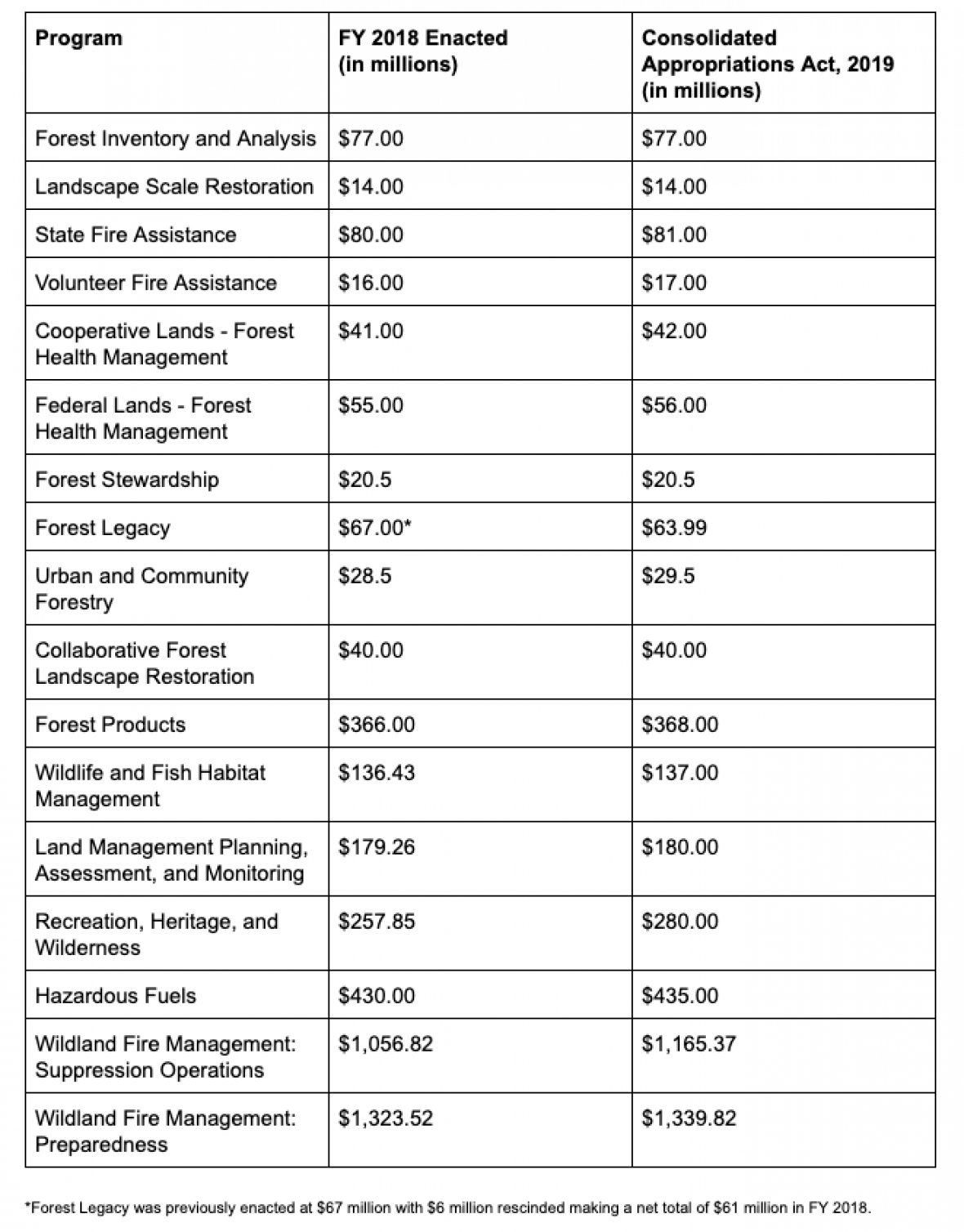The negotiations over fiscal year (FY) 2019 appropriations came to a close with the signing of House Joint Resolution 31 (H.J. Res. 31) by the President. The spending package was comprised of the seven remaining bills, including the Homeland Security bill containing provisions on border security that had initially stalled discussions on appropriations. For this month’s newsletter we will detail the contents of the Interior, Environment, and Related Agencies (Interior) bill contained in the FY 2019 appropriations as well as the Natural Resources Management Act (S. 47) currently moving through Congress.
(*To download a PDF of the February Policy Update, please visit our publication library.)
FY 2019 Appropriations
In order to avoid another partial federal government shutdown, a compromise was reached between Democrats and Republicans to fund the appropriations bills operating under the latest Continuing Resolution (CR). The agreement resulted in the passing of H.J. Res. 31 before the expiration of the CR at midnight on February 15, 2019. The Interior bill can be found within Division E beginning on page 306 and contains the programs of importance to State Foresters, some of which are outlined in the table below.
The FY 2019 Interior bill contains $35.6 billion in total discretionary funding. Allocation for the USDA Forest Service (Forest Service) is $6.087 billion, which is $152 million above FY 2018 totals. The funding level for the National Forest System is $1.94 billion (FY 2018 total was $1.92 billion), State and Private Forestry is $335.49 million (FY 2018 total was $329.59 million), Wildland Fire Management is $3.005 billion (FY 2018 total was $2.88 billion), Forest and Rangeland Research is $300 million (FY 2018 total was $297 million), and Capital Improvement and Maintenance is $431 million (FY 2018 total was $434 million).

Most funding levels for the programs outlined in the chart above stayed static or saw slight increases in funding. The largest increases in this year’s appropriations were seen in fire management line items. In advance of the fire funding fix going into effect in FY 2020, additional suppression funding was appropriated for wildfire suppression in the amount of $500 million.
Natural Resources Management Act
The public lands package (S. 47) introduced by Sen. Lisa Murkowski (R-AK) and Sen. Maria Cantwell (D-WA) passed the Senate by a vote of 92-8. On Tuesday, S. 47 passed the House by a vote of 363-62 and has been sent to the President for signature. This package bundles together over 100 individual land bills per a Senate-House agreement reached at the end of the previous Congress. Some notable sections of the Act are outlined below.
S. 47 includes permanent reauthorization for the Land and Water Conservation Fund (LWCF, Sec. 3001 on page 468). This program uses a portion of revenues from offshore oil and gas royalty payments to provide funds to federal, state, and local governments for land/water acquisition for outdoor recreation, conservation, and historic preservation activities. The Forest Legacy Program is among those funded by the LWCF.
The Wildfire Technology Modernization (Sec. 1114 on page 90 of S.47) specifies a deadline for creation of an assessment program for unmanned aircraft technology and for development and operation of a tracking system for fire resources. This section also calls for coordination with state firefighting agencies in the establishment or expansion of a ‘Wildfire Decision Support System’ to track and monitor decisions made in wildland fire management. Federal development of a “Rapid Response Erosion Database” and system to predict locations of future wildfires is also delineated here.
The Wildlife Habitat and Conservation Act (previously known as the ‘WILD Act,’ Sec. 7001 on page 533 of S.47) reauthorizes the Partners for Fish and Wildlife Program, calls for the development of strategic plans for the invasive species programs for each department that manages federal lands in coordination with states, creates innovation competitions for the management of invasive species and the protection of endangered species, and directs no less than 75% of funds for invasive species to be used for on-the-ground activities.
